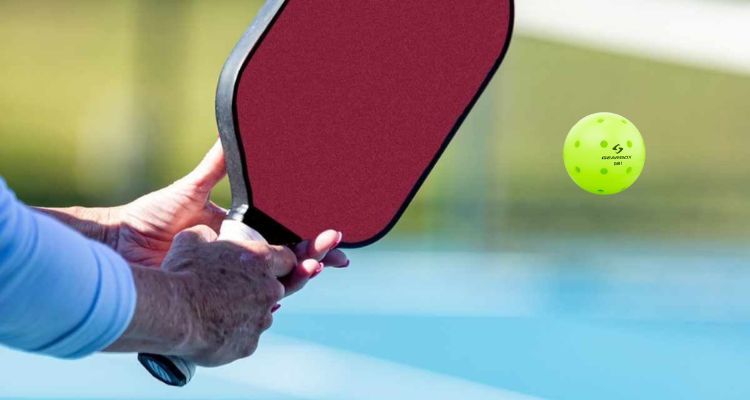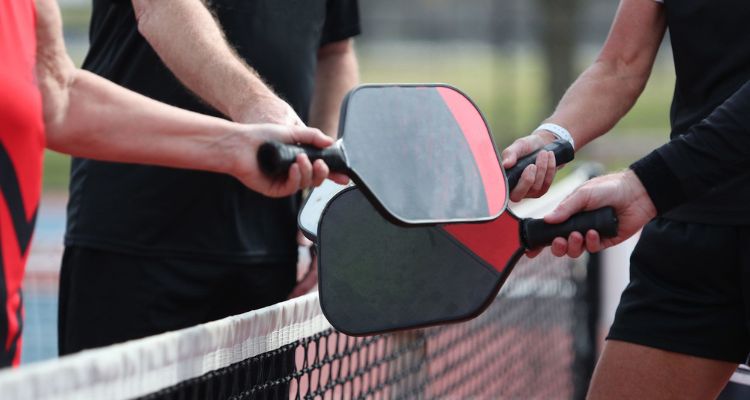Have you ever wondered if it’s okay to switch hands when playing pickleball? Well, the short answer is “yes,” but let’s dive into the details. Switching hands is not only legal in pickleball, but it’s also a technique that can be used during play. However, many players, whether recreational or professional, tend to avoid it. Today, we’ll explore when it’s a good idea to switch hands, as well as the benefits and disadvantages that come with it.
There is a common misconception among pickleball players that switching hands is not allowed during the game. However, this is not true. No rule prohibits players from switching hands while playing pickleball. In fact, if you take a look at the official USAPA rulebook, you’ll find that switching hands is completely legal. This means you can use right-handed shots, left-handed shots, or even double-handed shots, depending on the situation.
Despite the legality of this technique, some players discourage its use, especially among those who are not ambidextrous. The reason for this is that shifting the paddle into their non-dominant hand can slow them down. However, when used strategically and effectively, switching hands can offer several advantages.

Pros to Switch Hands
Playing pickleball with alternate hands can give you an edge over your opponent. Here are some advantages to consider:
- Increases Reach – When you perform a backhand shot, you must cross your arm over your body, limiting your paddle’s reach. By switching to your other hand, you can significantly increase your reach, which is particularly beneficial for singles players.
- Protects a Weak Backhand – Many beginners find it challenging to control their backhand shots compared to their forehand shots. By switching hands, you can minimize unforced errors and capitalize on your more powerful and controlled forehand.
- Requires Less Mobility – Switching hands allows you to cover more of the court with less movement, making it ideal for players with limited mobility or injuries. By conserving energy and focusing longer, you can improve your overall game.
- Confuses Opponent – Switching hands during play is a rare sight in pickleball. By doing so, you have the opportunity to confuse your opponent when they expect a shot to your backhand, only to find it becomes your forehand.
Cons to Switch Hands
While there are clear advantages to switching hands, there are also some potential drawbacks to consider:
- Incompatible With Fast Exchanges – Players lacking dexterity and quick reflexes with their non-dominant hand may struggle to execute this technique during fast exchanges, especially in the kitchen line. In such situations, sticking to backhand shots with the hand already in use might be the better option.
- Paddle Drop – Without sufficient practice, transferring the paddle properly during pickleball can result in dropping it. So, be sure to get enough practice before attempting to switch hands in a real game.
- Confusion in Doubles – Switching hands could potentially confuse your partner, leading to mishits. It’s crucial to communicate with your partner to avoid missing easy shots and maintain good coordination.
What Is the Best Time to Switch Hands in Pickleball?
Despite the potential disadvantages, with practice and caution, you can overcome them and make switching hands in pickleball work to your advantage. Here are some tips:

- Avoid switching hands indiscriminately to prevent dropped paddles. Change hands deliberately when you know you have enough time.
- Hold the paddle handle closer to the top if you find it too long for an efficient transfer. This will make it easier to pass the paddle over to your non-dominant hand.
- Practice, practice, practice! Set up a portable pickleball net on your driveway or yard to get more practice outside of the game. This will help you improve your skills and feel confident when switching hands during a real game.
By overcoming the disadvantages and perfecting the technique of switching hands in pickleball, you’ll have a unique strength that will make it a challenge for anyone to beat you on the court!
FAQs
Is It Legal to Switch Hands in Pickleball?
Yes, switching hands is legal in pickleball. There are no rules prohibiting it. However, professional players rarely switch hands, indicating how they approach hand switching at high levels. While it can give you a killer forehand as a backhand, it can be challenging to master.
How to Become a Pro at Hand Switching?
The key to mastering hand switching is practice. Spend time practicing forehand shots with your non-dominant hand until it becomes second nature. You can use a ball machine, a wall, or even practice with a partner. Additionally, gripping the paddle with both hands allows for quick switches and eliminates the need to transfer the paddle from one hand to another.
Can You Use Two Hands in Pickleball?
Absolutely! While one-handed backhands have been used since the game’s inception, the two-handed backhand has gained popularity among female pickleball players with tennis backgrounds.
Wrap Up
In conclusion, switching hands in pickleball can increase your reach, require less mobility, and even confuse your opponent. However, it’s important to weigh the advantages and disadvantages. With the right amount of practice and caution, you can use hand switching to your advantage and enhance your pickleball game. So, give it a shot, improve your skills, and become a formidable opponent on the court!




